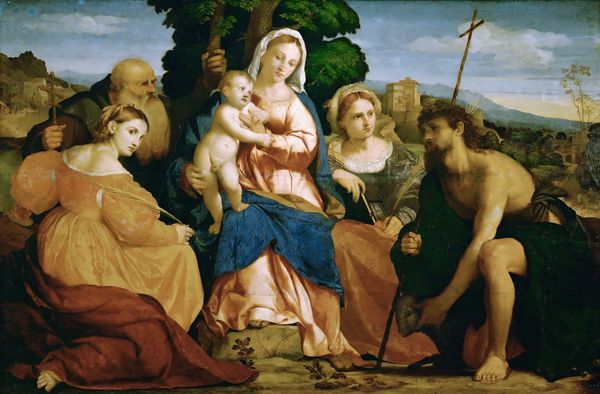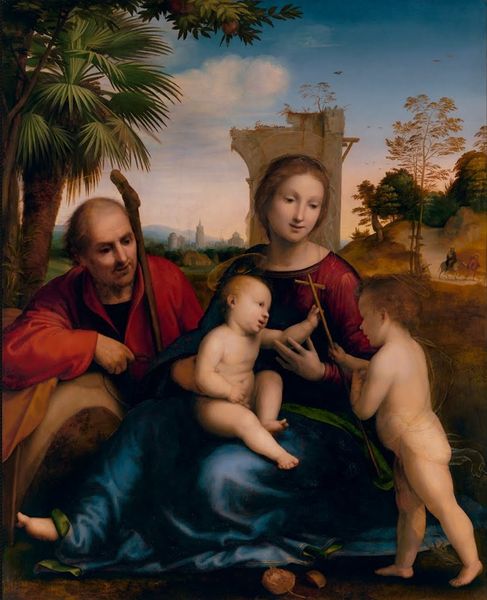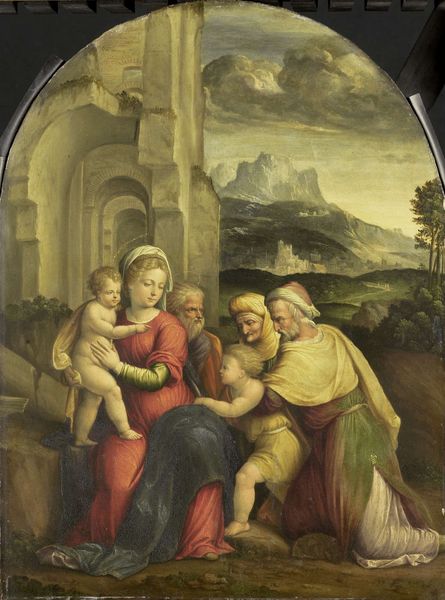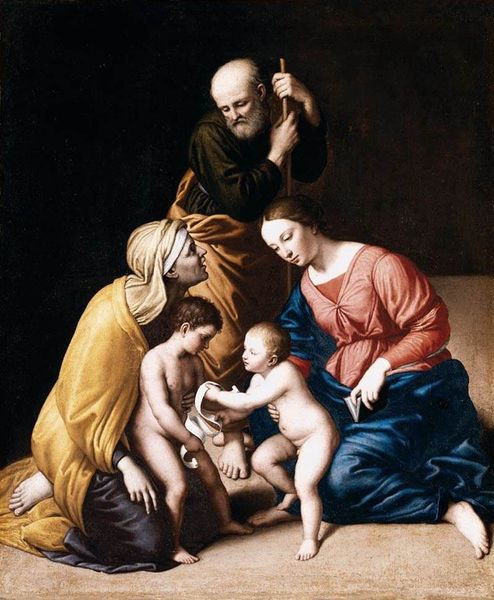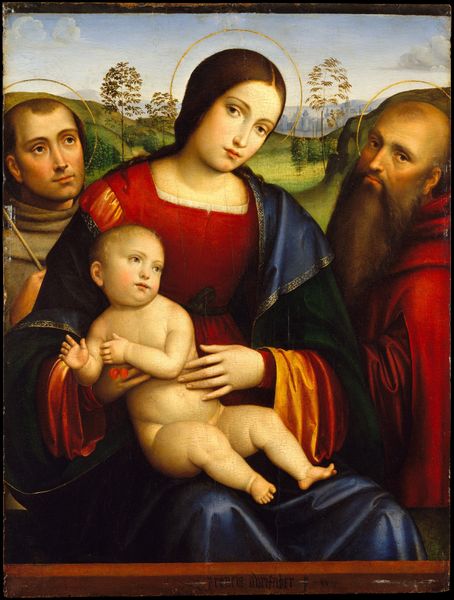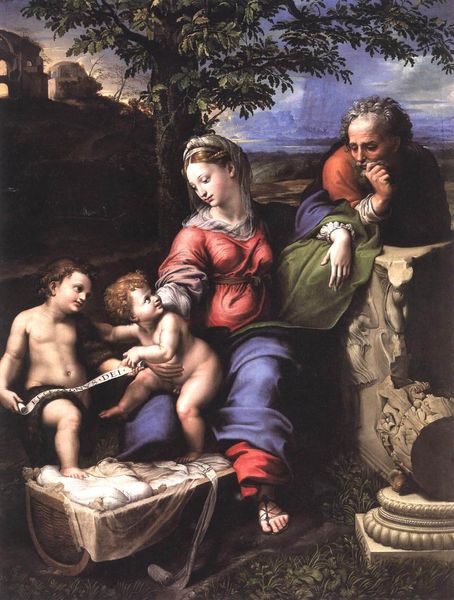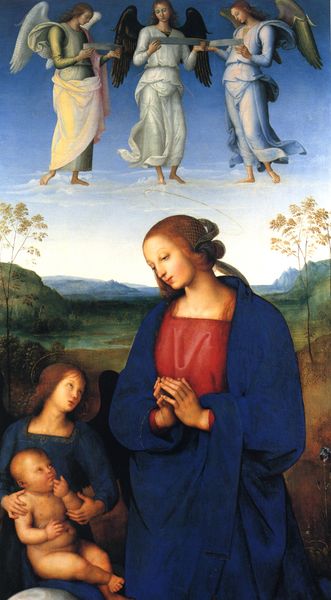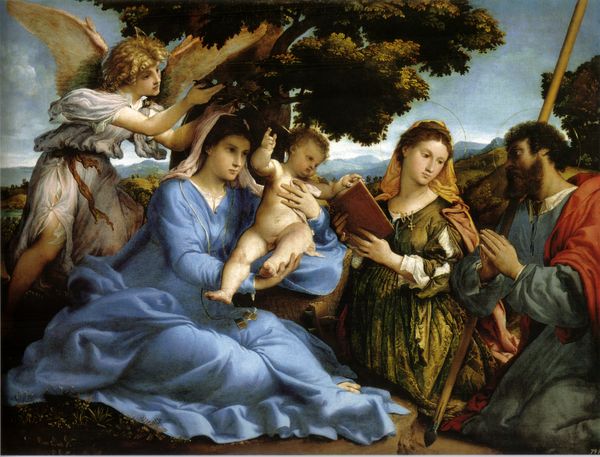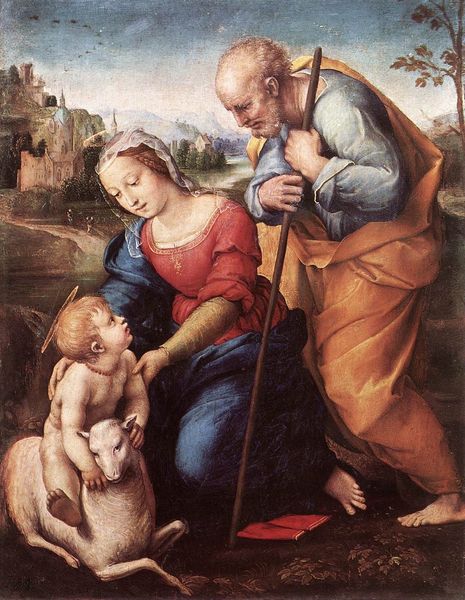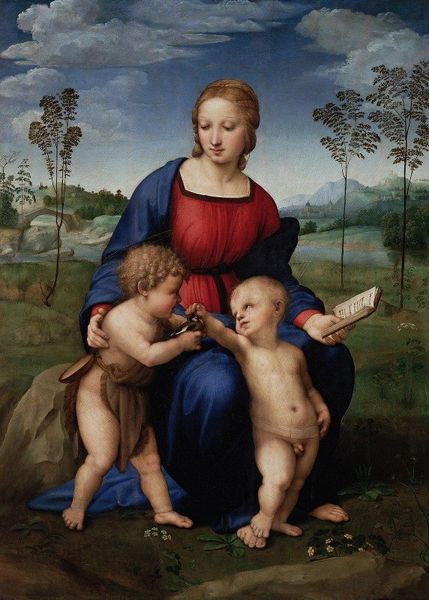
painting, oil-paint
#
portrait
#
high-renaissance
#
painting
#
oil-paint
#
figuration
#
oil painting
#
group-portraits
#
history-painting
#
italian-renaissance
#
portrait art
Dimensions: 51.5 x 42 cm
Copyright: Public domain
Editor: We're looking at Raphael's "The Holy Family with Saints Elizabeth and John," painted in 1506 using oil paints. It's striking how the figures are arranged, almost like a pyramid. What strikes you most about its composition? Curator: The formal elegance of the painting, Editor, rests on its meticulously balanced composition. Notice how Raphael employs the pyramidal structure to achieve a sense of harmony and stability. This compositional choice enhances the visual weight and importance of the figures. Furthermore, the interplay of light and shadow, what we term chiaroscuro, creates a soft modeling effect that draws our attention to the subjects' faces. What do you make of the artist's use of color in relation to form? Editor: I see how the blues and reds create depth. So the figures become almost sculptural, pushing forward from the background? Curator: Precisely! Raphael's considered application of color serves not merely to depict reality, but to articulate form. Each hue contributes to the overall balance of the painting. He mastered color, light and geometry to create visually unified image. And notice the aerial perspective in the landscape; How the tones get lighter, creating a sense of distance and immersing the viewer in the picture. What does this perspective do to the painting as a whole? Editor: It kind of flattens everything, emphasizing the family, but it creates a soft atmospheric sense to it too. It's like, even though it is balanced, there's tension in flattening out that space. It is a nice technique overall! I never thought about it like that before. Thanks for the insights. Curator: Indeed, this tension is what keeps us coming back. There’s always more to discover in the careful calibration of forms and colors, wouldn’t you agree?
Comments
No comments
Be the first to comment and join the conversation on the ultimate creative platform.
